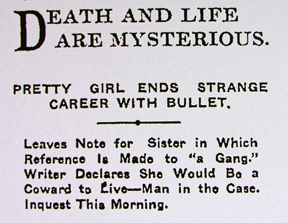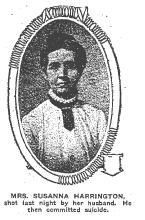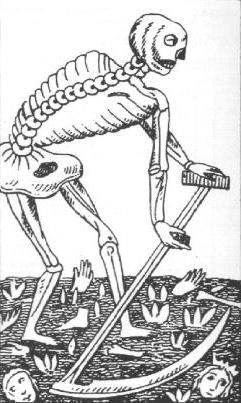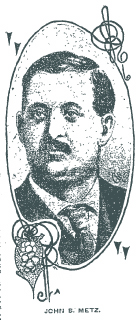June 23, 1907
Los Angeles
 What can one say about pretty young Eva Pulva? She lived in a lonely cottage on West Fifty-Fourth, and though her mother and sister lived on East Fifty-Seventh, she told people she had no kin. Her gentleman friends knew little of her. The police knew her best of all—watching as she, a ward of the probation department, came to the verge of trouble via men of low character. But she’d secured her nice little cottage, and things seemed to be going well…
What can one say about pretty young Eva Pulva? She lived in a lonely cottage on West Fifty-Fourth, and though her mother and sister lived on East Fifty-Seventh, she told people she had no kin. Her gentleman friends knew little of her. The police knew her best of all—watching as she, a ward of the probation department, came to the verge of trouble via men of low character. But she’d secured her nice little cottage, and things seemed to be going well…
…until she shaved her head and disappeared. The cops looked for her to offer her protection from whatever trouble she was in, but didn’t find her until she had a self-inflicted bullet in her chest.
Her note read “Dearest Sister: You will find my trunk at 2739 Budlong avenue. Please don’t tell the lady you are a relative of mine. I told her I had no relation. So let me go knowing that one person on your Sunny Earth don’t think me a liar. I am sorry I don’t leave espense money but (I belong to a gang that have my money) and when they hear I am goine most likely you will get it. Don’t tell mother. I wrote anything. Put me anywhere sister. I do don’t care where. I know you understand and my dear I am no good here…I am a coward to live but not a coward to die.”






 Mr. and Mrs. Simon Condon are building a home on the corner of Long Beach Boulevard and Sixty-First Street, an activity oft interrupted by Simon’s destructive rampages. It would seem that Mrs. Condon holds the family purse-strings, which Mr. Condon deems unfair (and objects to strongly) in that the house-building money came from a $1,000 injury settlement, the result of his meat-packing accident at the Simon Maier Packing Company.
Mr. and Mrs. Simon Condon are building a home on the corner of Long Beach Boulevard and Sixty-First Street, an activity oft interrupted by Simon’s destructive rampages. It would seem that Mrs. Condon holds the family purse-strings, which Mr. Condon deems unfair (and objects to strongly) in that the house-building money came from a $1,000 injury settlement, the result of his meat-packing accident at the Simon Maier Packing Company.

